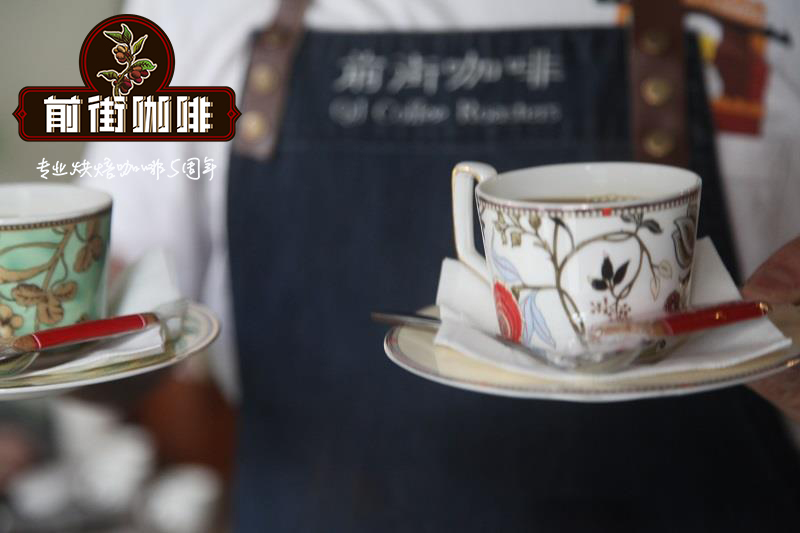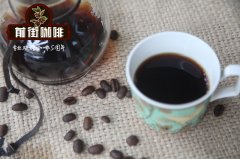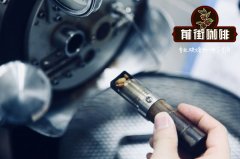Why is Philharmonic pressure so popular | the champion shares the parameters of making Philharmonic coffee.

Professional coffee knowledge exchange more coffee bean information please follow the coffee workshop (Wechat official account cafe_style)
Philharmonic presses to filter the taste of coffee.
Dripping coffee is often associated with a high description of cleanliness and purity. Let's find out why this happened.
Time and degree of grinding
Whether using the positive pressure method or the reverse pressure method, the degree of grinding is the key. But time is also crucial.
With the right grinding degree, the flavor of coffee can be extracted faster and better. This is because the slower the water flows through the coffee powder, the longer it will be in contact with the coffee powder.
Drip filter coffee is suitable for medium grinding (neither too coarse nor too fine). The French kettle is suitable for a thicker degree of grinding. Of course, this is not necessarily, sometimes the innovation that breaks the rules can have unexpected effects. (however, there is a scientific basis for the above experience.
Because bitterness is extracted after sour and sweet. The cooking method of the autoclave belongs to the soaking type, and generally speaking, the cooking time is longer, so a thicker grinding degree is needed to slow down the extraction speed. On the other hand, in the trickling method, the contact time between water and coffee powder is not so long, and a moderate grinding degree can prevent excessive or insufficient extraction.
Soak with Philharmonic pressure, no matter what degree of grinding is used, the time is completely under your control. If you want a cup of coffee that tastes clean, you'd better shorten the brewing time or increase the grinding degree.
Water temperature
Like the degree of grinding, water temperature is also an important factor affecting extraction. The higher the temperature of the water, the easier it is to extract the flavor of the coffee.
But it's not that simple. Extraction is the result of many factors, such as the degree of grinding, the degree of roasting of coffee beans and so on. But generally speaking, the higher the water temperature, the faster the extraction speed.
In the coffee industry, there is a consensus that the water temperature of extracted coffee is generally 91mi 96 °C (195-205 °F). On the other hand, the water temperature of the Philharmonic pressure is generally 80 °C (175-185 °F). Generally speaking, in this temperature range, the flavor of coffee will reflect better, and the sour and bitter balance. The taste may be closer to cold extract than Chemex.
Positive pressure and reverse pressure of Philharmonic pressure
[positive pressure]
Positive pressure is... Being pressed, the official standard tutorial practice.
As shown below, put the brewing part of the Philharmonic pressure on the cup, add powder, hot water, stir, time is up to press down.
[reverse pressure]
Reverse pressure is to assemble the whole brewing part with the piston and put it upside down. Then add powder, hot water, stir evenly, the time is up to cover the lid with filter paper, then put it upside down on the cup, and press it out.
The difference between positive pressure and back pressure
The taste is mainly related to the control of the above variables, the only difference is that with positive pressure, coffee will be filtered out at the same time, which will affect the integrity of the taste, and reverse pressure can avoid this problem. This is also the reason why more people prefer reverse pressure.
Cooking parameters of Philharmonic pressure
If you think I will give you a standard cooking parameter of Philharmonic pressure, then you may be disappointed. In fact, the "playability" of Philharmonic pressure is not lost at all, and the reason why relatively few people play is not because it is too expensive and complicated, but because there are too many variables, and it is relatively difficult to get started. In other words, Philharmonic pressure may be "difficult to learn", but it is not "difficult to master" at all.
Water temperature: 74 ℃-85 ℃
The official advice is that 74 ℃-80 ℃ water makes the best coffee. In fact, the temperature of hand water can reach 91 ℃-93 ℃ or higher, because of the different extraction methods. The material of the Philharmonic pressure determines that it dissipates heat slowly and loses less temperature, and its extraction method determines that its water temperature does not need to be too high-too high the temperature of immersion extraction is easy to extract, resulting in a bad flavor. Of course, it is too low, and some flavors are not easy to extract.
Therefore, the general recommendation 74 ℃-85 ℃ is OK.
Powder-to-water ratio: 1: 8: 1: 15
Haha, you may say that my powder-to-water ratio is bullshit. in fact, the powder-to-water ratio is the freest and most subjective parameter, according to the flavor characteristics of coffee beans, the degree of baking, personal taste preferences, extraction preferences, the powder-to-water ratio does not have a fixed reference value at all.
If you like it rich, you might as well add less water; if you like light, add more water; or, first extract a little thicker, and then dilute it with water.
Anyway, you can have fun as much as you like.
Degree of grinding: very coarse ~ medium fine grinding
In a word, there is no specific coffee beans and brewing methods, and there is no fixed reference value for the degree of grinding at all. It is generally recommended that the grinding of espresso is a little thicker than that of espresso and slightly finer than that of hand-made coffee. This is a very rigid parameter, suitable for many beans and techniques, but not necessarily for you.
If you feel stuck and unhappy when pressing, it means that the coffee powder scale is too fine; on the contrary, it means that the scale is too thick and can be adjusted appropriately.
Extraction time: 1 min ~ 3 min
According to the degree of grinding and water temperature, the finer the grinding, the shorter the extraction time, and vice versa; the higher the water temperature, the shorter the extraction time, and vice versa.
Philharmonic pressure champions all over the world make cooking parameters
In fact, some people may think that I didn't say anything last time, so let's take a look at how the champions of the 2016 Philharmonic Competition cooked it.
The first Takayuki Miyazaki in the Japanese Philharmonic Championship
Reversal method
The grinding degree of Kalita bean grinder is set to 4.
18 grams of coffee
1. After the coffee is put in, add 50 milliliters of 90 degrees Celsius water
2, stir and soak for 30 seconds
3, add 200ml of water of 70 degrees Celsius
4, press for 40 seconds to complete
The first Dylan in the 2016 Northwest Philharmonic Championship
McClain
Reversal method
Degree of grinding: very rough grinding
30 grams of coffee
Standard filter paper
1. After putting in the coffee, add 120 milliliters of water of 85 degrees Celsius
2, stir for 10 seconds
3, at 0:50 seconds, reverse the Philharmonic pressure
4, press for 20-30 seconds
5, add 120 milliliters of water to the coffee
The first place in the French Philharmonic Championship: Jer?me Dittmar
Adopt standard Philharmonic pressure standard brewing method (positive pressure)
Degree of grinding: medium and rough grinding
18 grams of coffee
Water: 225 ml 80 degrees Celsius
Standard filter paper
1pm 0displacement 00-0:15 add 40ml of water
Wait 30 seconds from 15 to 0:45 on the same day.
3, 0:45-1:45 add 185ml of water
4Perfect 1PUR 45-2:25 Extrusion is done.
First place in Columbia Philharmonic Championship: Sebastian Hernandez
Reversal method
Degree of grinding: medium fine grinding (Ditting bean mill)
20 grams of coffee
Water: 230 ml / 90 degrees Celsius
Standard filter paper
1pm 0displacement 00-0:30 plus 30 ml of cold water of 40 degrees Celsius
Stir, add 200 milliliters of water at 90 degrees Celsius, and screw on the filter paper cover
3Magazine 2 30-3:00 turn around, rotate, slowly squeeze to finish
From TORCH Coffee Yunnan Laboratory
Private house Philharmonic pressure cooking process
1. Prepare utensils, love press, bean grinder, coffee cup, coffee pot.
two。 Coffee Grinding. The important thing is that the coffee is ground to medium particle size for use of quality. By grinding the coffee, this allows for a thicker, more subtle cup or even more extraction.
3. Install Philharmonic pressure. The No. 4 round bottom that contacts the black rubber part in the plunger brewing tube. When operating, the numbers should be reversed.
4. Flush and preheat the filter. Use hot water in the Philharmonic pressure filter cap to pass through the filter to wash away the residual smell of the paper.
5. Put freshly ground coffee powder, recommend 17 grams or a round Philharmonic pressure spoon freshly ground coffee cup.
6. Water injection for the first time. Wait 45 seconds for steaming the water temperature is about 83 ℃, start the timer set to one minute, and pour in 50 ml or 1 / 4 cup of enough water.
7. Stir evenly for three times to make sure there are no dry spots.
8. Complete the stirring, the second water injection, so that the total level is slightly higher than 2 circles. This should be a 50ml or 1 / 4 cup 100ml or about 1 / 2 cup of your total water capacity.
9. Install and tighten the washed filter.
10. When the alarm clock prompts for 60 seconds, gently rotate it at a 45 °angle for 10 seconds and gently stir the coffee.
11. Use stable, mild pressure, allowing 15 to 25 seconds to prevent air leakage.
twelve。 For dilution and enjoyment, the recommended ratio of water to coffee is 1:1.
END
Important Notice :
前街咖啡 FrontStreet Coffee has moved to new addredd:
FrontStreet Coffee Address: 315,Donghua East Road,GuangZhou
Tel:020 38364473
- Prev

What is Arabica Coffee? is Arabica Coffee good? how to make Arabica Coffee?
Professional coffee knowledge exchange more coffee bean information Please follow the coffee workshop (Wechat official account cafe_style) Arabs like to drink coffee, this kind of coffee is called Turkish coffee or Arabica coffee, the cup is small, strong, the color is close to black. Usually, they have a drink after dinner or when they entertain guests, and it is also their life to go to a cafe when they are all right.
- Next

How to choose the espresso machine? how to distinguish the espresso machine from the good one?
Professional coffee knowledge exchange more coffee bean information Please pay attention to the coffee workshop (Wechat official account cafe_style) now more and more people can not do without coffee in their daily life, so there must be a lot of friends who will consider a coffee machine. Espresso is mellow and rich in oil, and one of the factors that determine the amount of coffee oil is the extraction pressure. General
Related
- What is the Philharmonic pressure? How to use Philharmonic pressure to make delicious coffee
- Why does a hand grinder have more fine powder than an electric grinder?
- In addition to the hot mom, what is the difference between the versions of EK43 | ditting and Mahdi ek43?
- What kind of equipment do you need to make coffee by hand? Introduction to novice starter cooking equipment tools
- Espresso needs to be ground how thick and thin scale entry Italian Coffee Machine Bean Grinder investigation and Grinding course
- How much does it cost to open a small private cafe? How much does it cost to learn coffee? How to operate it?
- The difference between the flavor characteristics of hand-brewed coffee and coffee maker is hand-brewed coffee really better than coffee maker? Can I use a coffee machine to make coffee beans by hand?
- The difference between 01 and 02 of hario v60 filter cup what is the difference between 01 and 02 filter cup opening and cooking flavor
- What's the difference between the smart cup and the French kettle? Which is better, the French kettle or the Smart Cup?
- What's the difference between a smart cup and a V60 filter cup? The difference between the taste of smart cup and hand-brewed coffee

